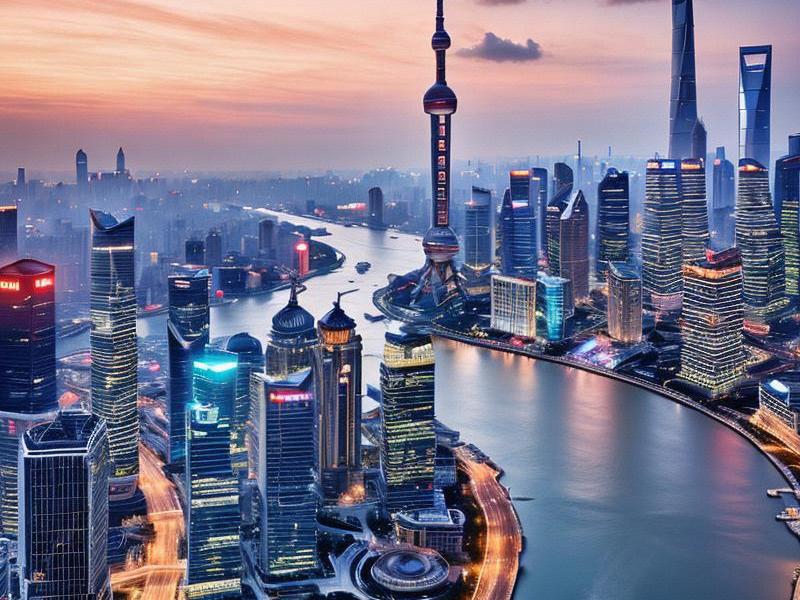Shanghai: A Dynamic Metropolis on the Rise
⏱ 2025-04-24 10:53 🔖 爱上海娱乐联盟
📢0℃

Shanghai, the largest city in China, is a vibrant metropolis that has captured the world's attention with its rapid urbanization and economic prowess. As the financial capital of China, Shanghai stands as a beacon of modernity and progress, blending tradition with innovation. This article aims to provide an in-depth analysis of Shanghai's urban development, economic achievements, cultural vibrancy, and its emergence as a global innovation hub.
Urban Development
Shanghai's urban landscape has undergone a remarkable transformation over the past few decades. The city's skyline, once dominated by colonial-era buildings, is now a testament to modern architecture. Iconic structures such as the Oriental Pearl Tower, the Shanghai Tower, and the Jin Mao Tower have become symbols of the city's economic and technological advancements.
The city's urban planning efforts have been instrumental in shaping its modern appearance. The Bund, a historic waterfront area, has been revitalized with modern skyscrapers and luxury hotels, creating a harmonious blend of history and modernity. Similarly, the Pudong New Area, once a rural area, has emerged as a global financial district, housing some of the world's tallest buildings and most prestigious financial institutions.
Shanghai's transportation infrastructure has also seen significant improvements. The city boasts one of the most extensive metro systems in the world, providing efficient and convenient public transportation. Additionally, the expansion of Shanghai Hongqiao International Airport and the ongoing development of the Shanghai Pudong International Airport have enhanced the city's connectivity to global destinations.
Economic Growth
夜上海最新论坛 Shanghai's economic growth has been nothing short of spectacular. As the financial capital of China, the city plays a pivotal role in the country's economic development. Its strategic location along the Yangtze River Delta and its proximity to the East China Sea make it a key player in international trade and commerce.
The city's economy is characterized by a diverse range of industries, including finance, manufacturing, technology, and real estate. Shanghai is home to the Shanghai Stock Exchange, one of the largest stock exchanges in the world, and the China (Shanghai) Pilot Free-Trade Zone, a significant step towards China's integration into the global economy.
The city's economic growth has been driven by its commitment to innovation and entrepreneurship. Shanghai has established itself as a hub for high-tech industries, attracting numerous multinational corporations and startups. The city's government has implemented various policies to foster innovation, such as tax incentives for research and development and the establishment of innovation parks.
Cultural Diversity
Shanghai's cultural diversity is a reflection of its history as a major port city. The city has been influenced by various cultures, including Chinese, Western, and Japanese, resulting in a unique blend of traditions and customs.
The city's cultural scene is vibrant and diverse, offering a wide range of activities for residents and visitors alike. From world-class museums and art galleries to traditional Chinese opera and modern theater, Shanghai has something to offer for everyone.
上海龙凤419是哪里的
One of the most iconic cultural landmarks in Shanghai is the Yu Garden, a classical Chinese garden that dates back to the Ming Dynasty. The garden's intricate design and beautiful scenery make it a popular destination for tourists and locals alike.
Shanghai's culinary scene is another aspect of its cultural diversity. The city is known for its wide variety of cuisines, ranging from traditional Shanghainese dishes to international flavors. The city's night markets and food streets are a must-visit for food lovers, offering a taste of the city's rich culinary heritage.
Innovation Hub
Shanghai's transformation into a global innovation hub is a testament to its commitment to progress and development. The city has established itself as a leader in various fields, including technology, finance, and healthcare.
One of the key drivers of Shanghai's innovation is its focus on research and development. The city has invested heavily in building research institutions and fostering collaboration between academia and industry. Shanghai's universities and research centers are at the forefront of cutting-edge research in various fields, including artificial intelligence, biotechnology, and renewable energy.
上海喝茶群vx The city's government has also implemented various policies to support innovation, such as tax incentives for startups and the establishment of innovation parks. These initiatives have attracted numerous startups and multinational corporations to Shanghai, creating a vibrant ecosystem for innovation.
Shanghai's innovation hub status is further enhanced by its connectivity to global markets. The city's strategic location and extensive transportation network make it a key player in international trade and commerce. Additionally, the city's government has established partnerships with various international organizations and institutions, fostering collaboration and knowledge exchange.
Challenges and Opportunities
Despite its many achievements, Shanghai faces several challenges in its journey towards becoming a global leader. One of the major challenges is environmental sustainability. The city's rapid urbanization and economic growth have led to increased pollution and strain on natural resources. Addressing these issues requires a comprehensive approach that includes promoting green technologies, improving waste management systems, and enhancing public awareness about environmental conservation.
Another challenge is ensuring social equity and inclusivity. As the city continues to grow and develop, it is essential to address issues related to housing, education, and healthcare to ensure that all residents have access to opportunities and resources.
However, these challenges also present opportunities for Shanghai to further enhance its urban development, economic growth, and cultural diversity. By addressing these issues proactively, the city can crteeaa more sustainable and inclusive future for its residents and visitors.
Shanghai’s Fintech Renaissance: Where Bund Architecture Hosts Blockchain Revolution【外滩18号的秘密:百年建筑里的爵士复兴】Shanghai 4450: Quantum Nightlife Nexus and the Galactic Entertainment Singularity《夜上海的华丽转身:从百乐门到外滩十八号》《夜上海的三个瞬间:从礼查饭店到复兴艺术中心》Shanghai’s Quantum Nightlife: Where Imperial Gardens Host Blockchain-Powered Revelries【钢与梦的交响:上海天际线的百年叙事】Shanghai’s Green Renaissance: Where Ancient Waterways Fuel Quantum Innovation【灶披间到智能厨房:上海弄堂里的烟火进化史】Shanghai 4550: Quantum Delta Renaissance and the Galactic Sustainability Matrix

